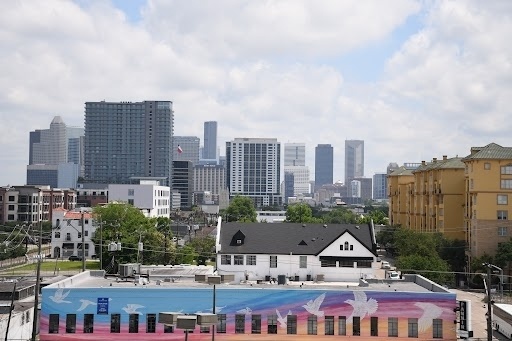The Greater Houston area is seeing a rise in residential development as well as industrial development, according to data from real estate company NAI Partners.
NAI Partners, which has locations in Houston, Austin and San Antonio, hosted a press breakfast Nov. 9 to discuss this residential and industrial trend. With research pulled from its own databases, NAI employees spoke on what they see happening for the future of real estate.
Developments are starting to happen farther outside of Houston, according to Alex Makris, a senior vice president at NAI Partners who focuses on land sales. Developers are now looking toward cities such as Waller, Richmond and Rosenberg, he said.
“The land market is very robust right now in the Greater Houston area,” Makris said. “It's being driven by residential developments, single-family and multifamily [developments] as well and also by quite a bit of industrial development.”
The city of Houston is also expected to become a national distribution center as opposed to just a regional one as it has been in the past. This is due to the recent rise in e-commerce and large corporations such as Amazon leasing space in most major markets, said Holden Rushing, a senior vice president at NAI Partners who specializes in industrial services.
“There are still a lot of big distributors who are coming to Houston for the first time, really. Houston has always been a strong regional distribution market. It's now becoming a strong national distribution market,” Rushing said. “A few years ago, a 300,000-square-foot spec building was a big building in Houston. Now there are multiple buildings planned and a few under construction [that are a] million square feet or more, which was unheard of in Houston.”
Finally, the city is going to see a strong retail presence going into 2022, said Jason Gaines, a senior vice president with NAI Partners who specializes in retail services. Despite supply and labor shortages, retail is expected to return to the same levels it was seeing back in 2019 before the COVID-19 pandemic, Gaines said.
A NAI report released in October showed 3.3 million square feet of new retail space were under construction in the third quarter of 2021, compared to 3.2 million square feet during the same quarter in 2020. The third quarter of 2021 also had the lowest vacancy level since the first quarter of 2020 at 5.8%.
The key to this success, according to Gaines, is to focus on the changing needs and lives of people. Many people now rely on construction that centers around convenience as they head out to jobs outside their homes, Gaines said.
“We're reacting to that: creating a lot of drive-thrus, a lot of patios [and] a lot of communal space,” he said.





